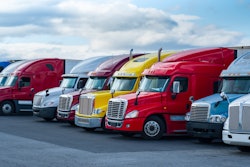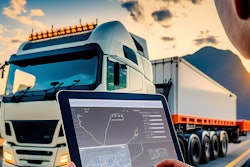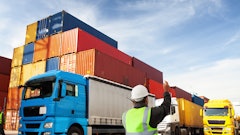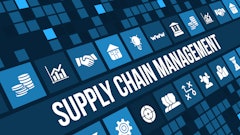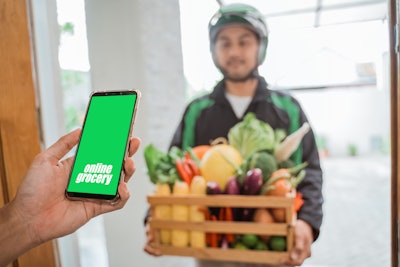
In the culinary world, food delivery services have reached a new level of importance in 2024. Fueled by the insatiable appetite for convenience and the relentless march of the digital economy, food delivery has become an indispensable part of our daily lives. Consumers today crave the ability to savor their favorite meals in the comfort of their homes or offices, driving a surge in demand for efficient and innovative food delivery solutions.
As the food delivery sector continues to flourish, businesses find themselves at a crossroads, searching for software that not only meets the needs of their unique operations but also propels them ahead in this competitive industry.
To navigate this culinary frontier, here’s an outline of food delivery software tailored to the diverse requirements of various food delivery operations. Whether you're a gourmet restaurant, a quick-service eatery, or a specialized cuisine provider, these software solutions will streamline operations, enhance customer happiness and ultimately contribute to your business's success in this dynamic era of food delivery.
What is food delivery software?
Food delivery software is a comprehensive technological solution designed to facilitate and optimize the processes involved in the delivery of food from restaurants or food providers to end consumers. What sets this software apart are its specialized functionalities tailored to the unique needs of the food delivery industry. Unlike generic business software, restaurant delivery software focuses on streamlining the order management, including online ordering, delivery logistics, and customer interaction.
How it works
At its core, food delivery software acts as the digital orchestrator of the entire delivery system. The process typically begins with customers placing orders, often using mobile app ordering or online ordering through a website. Once an order is received, the software efficiently manages the order processing, transmitting the request to the respective restaurant or kitchen.
From there, the software optimizes the dispatch process, assigning delivery drivers based on factors like proximity and real-time traffic conditions. As the delivery orders progress, customers can track their food orders in real time, providing a heightened sense of anticipation and transparency.
Upon successful delivery, the software often prompts customers for feedback and ratings, contributing to the continuous improvement of service quality. The seamless integration of these processes distinguishes restaurant delivery software, ensuring a cohesive and efficient experience for both restaurants and consumers.
Benefits
Efficiency. Food delivery software automates and streamlines various tasks, reducing manual errors and enhancing overall operational efficiency.
Order accuracy. Accurate order processing and real-time communication between restaurants, delivery drivers, and customers contribute to higher order accuracy.
Optimized delivery routes. The software's intelligent algorithms assist in optimizing delivery routing, minimizing delivery times, and maximizing the number of orders processed.
Customer engagement. The ability to provide real-time order tracking and solicit feedback enhances customer engagement, fostering a positive relationship between food businesses and their patrons.
Data-driven insights. Food delivery software often provides valuable analytics and insights, empowering businesses to make informed decisions, refine their strategies, and adapt to changing market demands.
4 types of businesses that benefit from food delivery software
In the competitive landscape of the food industry, the adoption of food delivery software has become instrumental for various types of businesses. Here are four categories that particularly stand to gain from integrating this technology into their operations:
1. Restaurants and cafés: Expanding market reach
For sit-down establishments, food delivery software is a gateway to expanding their market reach beyond the confines of their physical locations. By seamlessly integrating with online platforms, restaurant operators can tap into a broader customer base, offering their delectable dishes for delivery. This not only caters to the growing demand for at-home dining experiences but also allows restaurants and cafés to explore new revenue streams and establish a digital presence.
2. Fast food chains: Efficient, high-volume order processing
Fast food chains, characterized by high-volume orders and quick turnarounds, benefit significantly from offering delivery capabilities. These platforms are equipped to handle the rapid influx of orders, ensuring efficient order processing and accurate dispatch. Real-time tracking features become crucial for fast food chains, as they provide transparency for both customers and delivery drivers, contributing to a smoother and more reliable delivery process.
3. Specialty food stores: Offering a broader range of products
Specialty food stores, whether dealing in organic produce, gourmet ingredients, or niche cuisines, can leverage software to broaden their audience and product offerings.
These businesses can extend their reach beyond local neighborhoods, delivering unique and specialized products to a wider market. The software's capabilities in managing diverse inventories, handling specific customer preferences, and optimizing delivery routes empower specialty food stores to thrive in the competitive world of e-commerce and home delivery.
4. Meal prep and subscription services
Subscription management and recurring scheduling is a meal prep and subscription service that relies on the predictability and convenience of recurring deliveries.
Food delivery software plays a pivotal role in managing subscription services, handling recurring orders, and ensuring timely deliveries. These features not only simplify the customer experience but also contribute to the efficiency of meal preparation and delivery logistics.
By automating subscription management, businesses in this category can focus on crafting delicious and nutritious meals while maintaining a loyal customer base through hassle-free and punctual deliveries.
The best software for food delivery businesses in 2024
In the food delivery space, choosing the right software is pivotal for success. The criteria for selecting the best software go beyond mere functionality; they encompass factors that contribute to the overall efficiency, adaptability, and growth potential of a business. Here are the key criteria that businesses should consider when evaluating food delivery software in 2024:
1. Ease of use: Navigating the culinary interface
User-friendly interfaces are crucial for seamless adoption and efficient operations. The best food delivery software in 2024 should offer an intuitive and easy-to-navigate platform for both businesses and customers. This ensures that staff can quickly adapt to the system, reducing training times, and customers can place orders effortlessly.
2. Integration capabilities: Harmonizing the operational symphony
Software that seamlessly integrates with existing point-of-sale (POS) systems, payment gateways, and other operational software is a vital criterion. Integration capabilities eliminate data silos, streamline workflows, and enhance overall operational efficiency. The ability to synchronize inventory levels, process payments, and manage customer data in real-time contributes to a cohesive and interconnected business infrastructure.
3. Scalability: Adapting to culinary growth
The best food delivery software should be scalable, capable of growing alongside the business. Whether a startup or an established enterprise, the software should accommodate increasing order volumes, expanding menus, evolving business models, and updated food delivery options. Scalability ensures that as the business expands, the software remains a reliable and adaptable companion.
4. Customer support: A lifeline in the digital culinary landscape
Responsive and effective customer support is a non-negotiable criterion. Businesses require a support system that can address issues promptly, provide guidance on software usage, and offer solutions to any challenges that may arise. A robust customer support team ensures that businesses can navigate the digital culinary landscape with confidence.
In the world of food delivery, businesses that leverage software with these key features gain a competitive edge, ensuring not only the efficient management of day-to-day operations but also a foundation for growth and success in the ever-evolving restaurant industry. By addressing operational efficiency, enhancing customer happiness and providing scalability, businesses can overcome obstacles and carve their niche in the flourishing food delivery industry of 2024.




